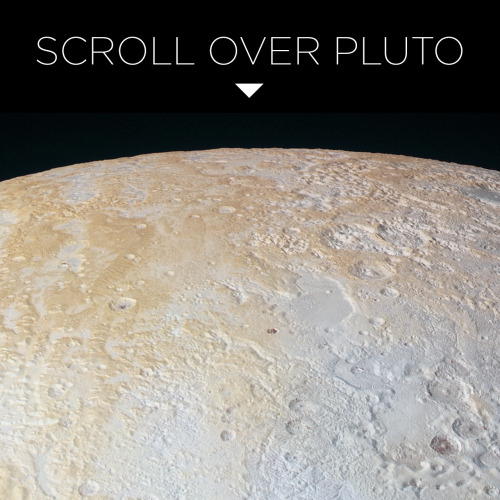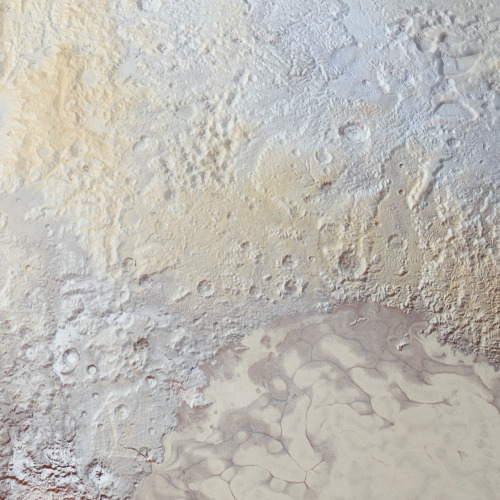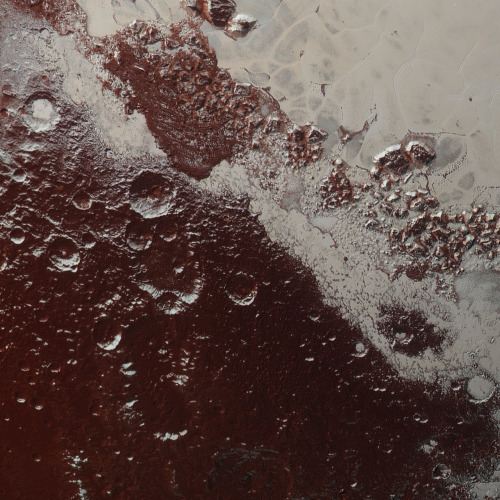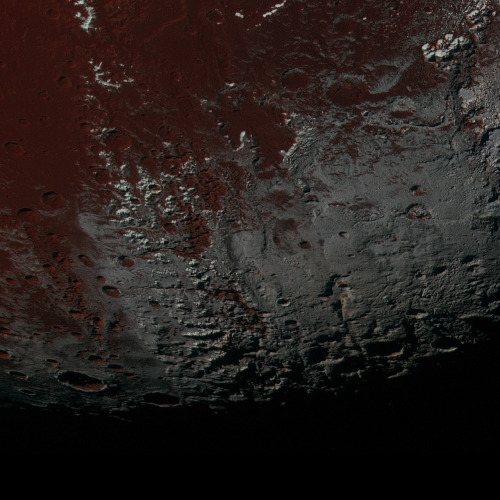Space Station Crew Members Walk In Space To Connect Docking Adapter Component
Space Station Crew Members Walk In Space to Connect Docking Adapter Component
Outside the International Space Station, Expedition 50 Commander Shane Kimbrough and Flight Engineer Peggy Whitson of NASA conducted a spacewalk March 30 to connect the newly relocated Pressurized Mating Adapter-3 (PMA-3) to the Harmony module in preparation for the delivery of an International Docking Adapter to PMA-3 to which U.S. commercial crew spacecraft will link up to in the years ahead. The mating adapter was robotically relocated from the port side of the Tranquility module to Harmony March 26 by ground controllers. Kimbrough and Whitson also installed the second of two upgraded computer relay boxes on the station’s truss and installed shields and covers over PMA-3 and the vacant port on Tranquility to which the PMA had been attached. It was the 199th spacewalk in support of space station assembly and maintenance, the sixth in Kimbrough’s career and the eighth for Whitson, who surpassed NASA’s Suni Williams for most spacewalks and most aggregate spacewalking time by a female.
More Posts from Fillthevoid-with-space and Others
Hubble Hones In on a Hypergiant's Home
NASA - Hubble Space Telescope patch. March 10, 2017
This beautiful Hubble image reveals a young super star cluster known as Westerlund 1, only 15,000 light-years away in our Milky Way neighborhood, yet home to one of the largest stars ever discovered. Stars are classified according to their spectral type, surface temperature, and luminosity. While studying and classifying the cluster’s constituent stars, astronomers discovered that Westerlund 1 is home to an enormous star. Originally named Westerlund 1-26, this monster star is a red supergiant (although sometimes classified as a hypergiant) with a radius over 1,500 times that of our sun. If Westerlund 1-26 were placed where our sun is in our solar system, it would extend out beyond the orbit of Jupiter.
Hubble orbiting Earth
Most of Westerlund 1’s stars are thought to have formed in the same burst of activity, meaning that they have similar ages and compositions. The cluster is relatively young in astronomical terms —at around three million years old it is a baby compared to our own sun, which is some 4.6 billion years old. For images and more information about Hubble, visit: http://hubblesite.org/ http://www.nasa.gov/hubble http://www.spacetelescope.org/ Image, Video, Credits: ESA/Hubble & NASA/Text Credits: European Space Agency/NASA/Karl Hille. Best regards, Orbiter.ch Full article
Deep Space Gateway to Open Opportunities for Distant Destinations
NASA logo. March 29, 2017 NASA is leading the next steps into deep space near the moon, where astronauts will build and begin testing the systems needed for challenging missions to deep space destinations including Mars. The area of space near the moon offers a true deep space environment to gain experience for human missions that push farther into the solar system, access the lunar surface for robotic missions but with the ability to return to Earth if needed in days rather than weeks or months. The period of exploration in the vicinity of the moon will begin with the first integrated mission of the Space Launch System (SLS) rocket and the Orion spacecraft, and will continue as we explore further. NASA aims to begin a cadence of one flight per year after the second mission, and the agency has established an initial set of integrated human exploration objectives combining the efforts aboard the International Space Station, SLS and Orion, and other capabilities needed to support human missions to explore deep space. Flight hardware for SLS and Orion is currently in production for the first and second missions, life support and related technologies are being tested on ISS, and habitation and propulsion development activities are also underway. NASA is working with domestic and international partners to solve the great challenges of deep space exploration. Missions in the vicinity of the moon will span multiple phases as part of NASA’s framework to build a flexible, reusable and sustainable infrastructure that will last multiple decades and support missions of increasing complexity. Deep Space Gateway This first phase of exploration near the moon will use current technologies and allow us to gain experience with extended operations farther from Earth than previously completed. These missions enable NASA to develop new techniques and apply innovative approaches to solving problems in preparation for longer-duration missions far from Earth. In addition to demonstrating the safe operation of the integrated SLS rocket and Orion spacecraft, the agency is also looking to build a crew tended spaceport in lunar orbit within the first few missions that would serve as a gateway to deep space and the lunar surface. This deep space gateway would have a power bus, a small habitat to extend crew time, docking capability, an airlock, and serviced by logistics modules to enable research. The propulsion system on the gateway mainly uses high power electric propulsion for station keeping and the ability to transfer among a family of orbits in the lunar vicinity. The three primary elements of the gateway, the power and propulsion bus and habitat module, and a small logistics module(s), would take advantage of the cargo capacity of SLS and crewed deep space capability of Orion. An airlock can further augment the capabilities of the gateway and can fly on a subsequent exploration mission, Building the deep space gateway will allow engineers to develop new skills and test new technologies that have evolved since the assembly of the International Space Station. The gateway will be developed, serviced, and utilized in collaboration with commercial and international partners.
Lunar Space Station
“I envision different partners, both international and commercial, contributing to the gateway and using it in a variety of ways with a system that can move to different orbits to enable a variety of missions,” said William Gerstenmaier, associate administrator for Human Exploration and Operations at NASA Headquarters in Washington. “The gateway could move to support robotic or partner missions to the surface of the moon, or to a high lunar orbit to support missions departing from the gateway to other destinations in the solar system.” Deep Space Transport The second phase of missions will confirm that the agency’s capabilities built for humans can perform long duration missions beyond the moon. For those destinations farther into the solar system, including Mars, NASA envisions a deep space transport spacecraft. This spacecraft would be a reusable vehicle that uses electric and chemical propulsion and would be specifically designed for crewed missions to destinations such as Mars. The transport would take crew out to their destination, return them back to the gateway, where it can be serviced and sent out again. The transport would take full advantage of the large volumes and mass that can be launched by the SLS rocket, as well as advanced exploration technologies being developed now and demonstrated on the ground and aboard the International Space Station. This second phase will culminate at the end of the 2020s with a one year mission in the lunar vicinity to validate the readiness of the system to travel beyond the Earth-moon system to Mars and other destinations, and build confidence that long-duration, distant human missions can be safely conducted with independence from Earth. Through the efforts to build this deep space infrastructure, this phase will enable explorers to identify and pioneer innovative solutions to technical and human challenges discovered or engineered in deep space. To achieve the agency’s goal to extend humanity’s presence in the solar system will require the best research, technologies and capabilities from international partners and the private sector. NASA will look to partners for potential contributions of spaceflight hardware and the delivery of supplemental resources. The gateway and transport could potentially support mission after mission as a hub of activity in deep space near the moon, representing multiple countries and agencies with partners from both government and private industry. NASA is open to new ideas of both a technical and programmatic nature suggestions as we develop, mature and implement this plan. Related links: Journey to Mars: https://www.nasa.gov/topics/journeytomars/index.html Orion Spacecraft: https://www.nasa.gov/exploration/systems/orion/index.html Space Launch System (SLS): https://www.nasa.gov/exploration/systems/sls/index.html Image, Text, Credits: NASA/Kathryn Hambleton. Greetings, Orbiter.ch Full article
Will NASA send astronauts to the moon again or any other planet within the next ten years?

@nasaorion spacecraft will launch on the Space Launch system (the largest spacecraft every built, even bigger than the Saturn V rocket!). Both are under construction @nasa currently, and this is the spacecraft that will take us beyond the low earth orbit of the International Space Station, whether that be the Moon, Mars, or beyond. We will conduct test missions with astronauts on Orion in the early 2020s, and a first mission will take us 40,000 miles beyond the Moon!

RIP, little buddy.

Stars are too distant to really peer at and they have all that radiation and heat and blinding light and such so it’s doubtful that we will ever be able to prod the Sun, but astronomers can certainly classify what stars we’ve been able to observe! This is the first part of a two-part series on star classification systems. This podcast focuses on variable stars, how they were discovered, the awesome women who started developing the basis of a major star classification system, and what variable stars did for our understanding of the universe.
There is a lot of technical talk and I did my best to make it comprehensible but you can absolutely hit me up with questions if you have them! I’m also on Twitter at @HDandtheVoid if you’d rather ask me there. And go ahead and check out the podcast on iTunes, rate it or review it if you’d like, and subscribe! I’ll always post all the extras here on tumblr but iTunes might be more convenient for downloading and podcast apps and all that good stuff.
Below the cut is some elaboration on the episode itself, including my sources, music credits, a BIG glossary, a quote on women and emotional labor that really hits home for me, and a transcript. I mention a couple of books and quote a couple people in this episode so if you want to see that written down, those sources are there as well. Let me know what you think of this episode, let me know what you think I should research next*, tell me a fun space fact… anything’s helpful!
*(The June 19th podcast is already set, it’s going to be part 2 on star classifications, but in July I could start talking about things like spectroscopy, planets, dark matter, or I have a book in at the library on longitude.)
Glossary:
arcsecond - an infinitesimal measurement of a degree; in 1 degree there are 3,600 arcseconds.
cosmic distance measurements: light-years - a way to imagine distance scales on an astronomical level; the distance light can travel in one year, or about 6 trillion miles. parsecs - a measurement of distance on an astronomical scale; the distance to a star that shifts by one arcsecond from one side of Earth’s orbit to the other. It’s more common than using light-years when discussing deep space astronomy. One parsec is about 19 trillion miles (30 trillion kilometers), a bit over 3 light-years.
magnitude - the measurement of a star’s brightness as seen from earth. The brighter it is, the lower its magnitude value; the Sun has an apparent magnitude of -27.
Malmquist Bias - the stars that are visible in a cluster are the brightest ones. Astronomers rely on them to compute average luminosity, but the fact that they’re the brightest ones inevitably skews the results.
parallax - the apparent shift of an object when viewed through two different lines of sight.
radial velocity - the speed at which a star is moving away from or towards Earth.
standard candle - a kind of celestial object that has a known luminosity due to some characteristic that the entire class of objects possesses.
stellar photometry - measuring and recording the magnitude of stars.
triangulation - a technique to measure the distance of an object by observing it from two different locations, knowing the distance between both observation locations and measuring the angle at which the distant object moves (its parallax angle).
variable stars: variable stars - stars that change brightness. Reasons for the brightness changes vary, and certain types of variable stars can be used to determine relative distance. They are either intrinsic (when a change in brightness is caused by a star’s own physical changes, like pulsation or eruption) or extrinsic (when the variance has an external cause, such as an eclipse of one star by another or stellar rotation). Cepheid variables - variable stars with a period between 1 and 70 days, with light variations from 0.1 to 2 magnitudes. They’re massive, with a high luminosity and are usually classified between F and G or K. They obey the period-luminosity relationship and played a major part in calculating distances to far-away galaxies as well as helping to determine the age of the Universe. eclipsing binaries - binary systems of stars where the components regularly eclipse one another, causing an apparent decrease in the brightness of the system. irregular variables - variable stars, typically red giants, without a measurable period to their luminosity. Long Period Variables - LPVs have periods ranging from 30 to 1,000 days. They’re red giants or supergiants, typically classified M, R, C, or N. There are subclasses, too: Mira, which have light variations of more than 2.5 magnitudes and are the future evolution of our own star, the Sun; and semiregular, which have some regular periods and some irregular light variation and have light variations less than 2.5 magnitudes. RR Lyrae - variable stars with a period of 0.05 to 1.2 days and a light variation between 0.3 and 2 magnitudes. They’re older and smaller than Cepheids, and are white giant stars typically classified as A. RV Tauri - variable stars that have periods between 30 and 150 days, light variation up to 3 magnitudes, and possible cycle variations that can be hundreds or thousands of days long. They’re yellow supergiants classified between G and K.
cataclysmic variables: dwarf nova - a close binary system of a red dwarf, a white dwarf, and an accretion disk around the white dwarf. They brighten by 2 to 6 magnitudes depending on the stability of the disk, which loses material to the white dwarf. nova - a close binary system of a white dwarf and a secondary star that’s a little cooler than the Sun. The system brightens 7 to 16 magnitudes in 1 to 100 days, and then the star fades slowly to the initial brightness over a period of several years or decades. At maximum brightness, it’s similar to an A or F giant star. Recurrent novae are similar to this category of variable but have several outbursts during their recorded history. R Coronae Borealis - an eruptive variable, a supergiant star that is hydrogen-poor and carbon-rich and spends most of its time at maximum light, fading as much as 9 magnitudes at irregular intervals. Most often classified between F and K or R. supernova - a massive star that explodes with a magnitude increase of 20 or more. Supernovae have led us to realize that the expansion of the Universe is accelerating. symbiotic stars - close binary systems of a red giant and a hot blue star. They have nova-like outbursts up to 3 magnitudes.
Script/Transcript
Sources:
What stars are made of via NASA
Stars, Cepheid Variable by T. Lloyd Evans via the California Institute of Technology aka CalTech
Variable stars via the Australia Telescope National Facility
American Association of Variable Star Observers website. I used a couple of pages from this one but the whole organization is kinda on the nose.
Stellar magnitude via EarthSky
A star magnitude scale via Harvard
Harvard Observatory’s Astronomical Photographic Plate Collection, which has a history of the collection and the women computers.
Definitions and differences for parsecs and light-years, and a description of parallax and triangulation via EarthSky
Standard candle breakdowns via some magical wonderful person with the best accessible online science book project I have ever encountered. Mad props to whoever is doing this, it’s a noble cause.
Info on Walter Baade via the Online Archives of California
A very math-y breakdown of the Malmquist Bias in the article “Observational Selection Bias Affecting the Determination of the Extragalactic Distance Scale” by P. Teerikorpi, published 1997
Johnson, George. Miss Leavitt’s Stars. Atlas Books: NY, 2005.
Henrietta Swan Leavitt quote: “It is worthy of notice [that] the brighter variables have the longer periods” (38).
“If a theory or observation seemed to suggest that we, the observers, happen to occupy an exalted place in the heavens, then it was probably wrong” (110)
Edwin Hubble quote: “With increasing distance, our knowledge fades, and fades rapidly. Eventually, we reach the dim boundary—the utmost limits of our telescopes. There, we measure shadows, and search among ghostly errors of measurements for landmarks that are scarcely more substantial” (130)
Pickover, Clifford A. “Leavitt’s Luminosity Law.” Archimedes to Hawking: Laws of Science and the Great Minds Behind Them. Oxford UP: NY, 2008. 475.
Soba, Dava. The Glass Universe: How the Ladies of the Harvard Observatory Took the Measure of the Stars. Viking: New York, 2016.
From Claire Messud’s The Woman Upstairs (I haven’t read the book, I just collect quotes, so this isn’t me endorsing the book; I know nothing about it except this paragraph): “I’m a good girl, I’m a nice girl, I’m a straight-A, strait-laced, good daughter, good career girl, and I never stole anybody’s boyfriend and I never ran out on a girlfriend, and I put up with my parents’ shit and my brother’s shit, and I’m not a girl anyhow, I’m over forty fucking years old, and I’m good at my job and I’m great with kids and I held my mother’s hand when she died, after four years of holding her hand while she was dying and I speak to my father every day on the telephone–every day, mind you, and what kind of weather do you have on your side of the river, because here it’s pretty gray and a bit muggy too? It was supposed to say ‘Great Artist’ on my tombstone, but if I died right now it would say ‘such a good teacher/daughter/friend’ instead; and what I really want to shout, and want in big letters on that grave, too, is FUCK YOU ALL.”
Intro Music: ‘Better Times Will Come’ by No Luck Club off their album Prosperity
Filler Music: 'River Man’ by Nick Drake off his album Five Leaves Left.
Outro Music: ‘Fields of Russia’ by Mutefish off their album On Draught

This Black Eye Galaxy that got its name from the band of light absorbing dust appearing in front of the star systems bright center in the Hubble space telescope.
via reddit

The Cassini probe took a picture of Saturn that includes Earth in it!
Cassini has actually taken a ton of cool photos of Saturn if you want to check those out in the wake of last week’s planets podcast.




“It sounds far fetched even for the plot of a sci-fi film.
NASA scientists have proposed a radical idea to launch a magnetic field around Mars, with hopes it could protect the red planet from intense solar wind and allow humans to explore alongside rovers.
Jim Green, NASA’s Planetary Science Division Director, revealed the idea today at the Planetary Science Vision 2050 Workshop in Washington DC…
The proposal would create a dipole field –a pair of equal and oppositely charged magnets – in an orbit between Mars and the sun, at a point known as Mars L1.
This ‘artificial magnetic field’ would put Mars inside a ‘magnetotail,’ protecting it from the harsh solar wind.
Without the barrage of high-energy particles, Mars’ atmosphere would begin to rebuild itself over time.
In just a matter of years, the simulations show the planet could achieve an ‘Earth comparable field.’
Increasing the pressure would cause the equator to heat up, leading the polar cap to collapse, Green says…"
Source: http://www.dailymail.co.uk/sciencetech/article-4276210/NASA-unveils-plan-surround-Mars-magnetic-field.html?ITO=applenews

In November, a couple lovely people brought my attention to articles about a recent discovery that headlines consistently referred to as the ‘zombie star.’ What the heck is a zombie star? What makes it a zombie? I found a zombie star from 2014 in addition to the one in 2017 and I dug into the life cycle of the average star to get a sense of what undeath looks like in stars.
Below the cut are my sources, music credits, a vocab list, and the transcript of this episode. Suggest what you think I should research next by messaging me here, tweeting at me at @HDandtheVoid, or asking me to my face if you know me. Please subscribe on iTunes, rate it and maybe review it, and tell friends if you think they’d like to hear it! Also, welcome if you found me through PodCon!
(My thoughts on the next episode are the International Space Station, the transit of Venus, or astronaut training practices. The next episode will allegedly be up on New Year’s Day, January 1st. We’ll see about that.)
Glossary
Chandrasekhar limit - the upper limit for the mass of an astronomical body that can support extreme density without imploding: about 1.4 times the mass of our Sun. Any white dwarf star that has less than that mass will stay a white dwarf forever; any star that exceeds the Chandrasekhar limit will end in a supernova.
dwarf nova - a close binary system of a red dwarf, a white dwarf, and an accretion disk around the white dwarf. They brighten by 2 to 6 magnitudes depending on the stability of the disk, which loses material to the white dwarf. Categorized as a cataclysmic variable.
neutron star - a type of star that has gone supernova, when the surviving core is 1.5 to 3 solar masses and contracts into a small, very dense, very fast-spinning star.
nova - a close binary system of a white dwarf and a secondary star that’s a little cooler than the Sun. The system brightens 7 to 16 magnitudes in 1 to 100 days, and then the star fades slowly to the initial brightness over a period of several years or decades. At maximum brightness, it’s similar to an A or F giant star. Recurrent novae are similar to this category of variable but have several outbursts during their recorded history. Categorized as a cataclysmic variable.
pulsar - a type of neutron star that spins very, very fast. Also a kind of variable star that emits light pulses usually between 0.0014 seconds and 8.5 seconds.
reflection telescope - reflects light rays off the concave surface of a parabolic mirror to get an image of a distant object. Higher contrast image, worse color quality.
spectroscopy - the study of light from an incandescent source (or, more recently, electromagnetic radiation and other radiative energy) that has its wavelength dispersed by a prism or other spectroscopic device that can disperse an object’s wavelength. The spectra of distant astronomical objects like the Sun, stars, or nebulae are patterns of absorption lines that correspond to elements that these objects are made up of.
supernova - a massive star that explodes with a magnitude increase of 20 or more. Supernovae have led us to realize that the expansion of the Universe is accelerating.
supernova progenitors - the kinds of stars and conditions that will result in certain types of supernovae.
white dwarf star - a star that has exhausted all of its nuclear fuel (i.e. no longer has hydrogen to convert into helium through nuclear fusion). It is the hot, dense core of a star. Unless it is acquiring/accreting matter from a nearby star, it will cool over time and become a dead star.
Script/Transcript
Sources
Chandrasekhar limit via PBS, Jan 2012
“The Chandrasekhar Limit is therefore not just as upper limit to the maximum mass of an ideal white dwarf, but also a threshold. A star surpassing this threshold no longer hoards its precious cargo of heavy elements. Instead, it delivers them to the universe at large in a supernova that marks its own death but makes it possible for living beings to exist.”
Type I and Type II supernovae via Space.com
Type Ia supernovae via Swinburne University of Technology
Type Ia Supernova Progenitors via Swinburne University of Technology
Zombie star via NASA, Aug 2014
Curtis McCully “I was very surprised to see anything at the location of the supernova. We expected the progenitor system would be too faint to see, like in previous searches for normal Type Ia supernova progenitors. It is exciting when nature surprises us.”
The abstract of the article McCully and his team wrote on Type 1ax supernovae via Nature Magazine, Aug 2014
Zombie star via CNN, Nov 2017
Arcavi: "My first thought was that this must be some nearby star in our galaxy, just varying its brightness. But when we got the first spectrum of it, we saw that it was in fact a supernova 500 million light-years away. My mind was blown. The fact that it got bright and dim five times was very unusual. We'd never seen a supernova do that before."
Arcavi: "This means that we still have a lot to learn about how massive stars evolve and how they explode."
Robert Evans via Sky and Telescope, Sept 2005
2017 zombie star articles I didn’t use because there were too many of them:
Air and Space Magazine, Nov 2017
The Atlantic, Nov 2017
BBC News, Nov 2017
BGR, Nov 2017
Carnegie Science, Nov 2017
Earth Sky, Nov 2017
Express UK, Nov 2017
The Guardian, Nov 2017
Intro Music: ‘Better Times Will Come’ by No Luck Club off their album Prosperity
Filler Music: 'Toll Free’ by the Shook Twins off their album What We Do
Outro Music: ‘Fields of Russia’ by Mutefish off their album On Draught
-
 amateur--katrina--london liked this · 6 years ago
amateur--katrina--london liked this · 6 years ago -
 golden-womanhcassidy liked this · 7 years ago
golden-womanhcassidy liked this · 7 years ago -
 ca00-blog liked this · 8 years ago
ca00-blog liked this · 8 years ago -
 fillthevoid-with-space reblogged this · 8 years ago
fillthevoid-with-space reblogged this · 8 years ago -
 thisisnotasimulation-blog1 liked this · 8 years ago
thisisnotasimulation-blog1 liked this · 8 years ago -
 atrumdeus reblogged this · 8 years ago
atrumdeus reblogged this · 8 years ago -
 mapelie liked this · 8 years ago
mapelie liked this · 8 years ago -
 brashka liked this · 8 years ago
brashka liked this · 8 years ago -
 dontworkrightuphere liked this · 8 years ago
dontworkrightuphere liked this · 8 years ago -
 tiggerperson reblogged this · 8 years ago
tiggerperson reblogged this · 8 years ago -
 tiggerperson liked this · 8 years ago
tiggerperson liked this · 8 years ago -
 all11is11one reblogged this · 8 years ago
all11is11one reblogged this · 8 years ago -
 starhasarrived reblogged this · 8 years ago
starhasarrived reblogged this · 8 years ago -
 arandomnovafangirl-blog liked this · 8 years ago
arandomnovafangirl-blog liked this · 8 years ago -
 5feet-of-anxiety liked this · 8 years ago
5feet-of-anxiety liked this · 8 years ago -
 h3r03s-4r3-m4rv310us liked this · 8 years ago
h3r03s-4r3-m4rv310us liked this · 8 years ago -
 waningyouth reblogged this · 8 years ago
waningyouth reblogged this · 8 years ago -
 waningyouth liked this · 8 years ago
waningyouth liked this · 8 years ago -
 naiaraorariana reblogged this · 8 years ago
naiaraorariana reblogged this · 8 years ago -
 shadowbagelbird reblogged this · 8 years ago
shadowbagelbird reblogged this · 8 years ago -
 shadowbagelbird liked this · 8 years ago
shadowbagelbird liked this · 8 years ago -
 tinsnip liked this · 8 years ago
tinsnip liked this · 8 years ago -
 willieolsen liked this · 8 years ago
willieolsen liked this · 8 years ago -
 starhasarrived liked this · 8 years ago
starhasarrived liked this · 8 years ago -
 jacquelinesantiago liked this · 8 years ago
jacquelinesantiago liked this · 8 years ago -
 gypseywanderer reblogged this · 8 years ago
gypseywanderer reblogged this · 8 years ago -
 gypseywanderer liked this · 8 years ago
gypseywanderer liked this · 8 years ago -
 honeythread liked this · 8 years ago
honeythread liked this · 8 years ago -
 saoirsely liked this · 8 years ago
saoirsely liked this · 8 years ago -
 missusborderline-blog liked this · 8 years ago
missusborderline-blog liked this · 8 years ago -
 spaceexp reblogged this · 8 years ago
spaceexp reblogged this · 8 years ago
A podcast project to fill the space in my heart and my time that used to be filled with academic research. In 2018, that space gets filled with... MORE SPACE! Cheerfully researched, painstakingly edited, informal as hell, definitely worth everyone's time.
243 posts




